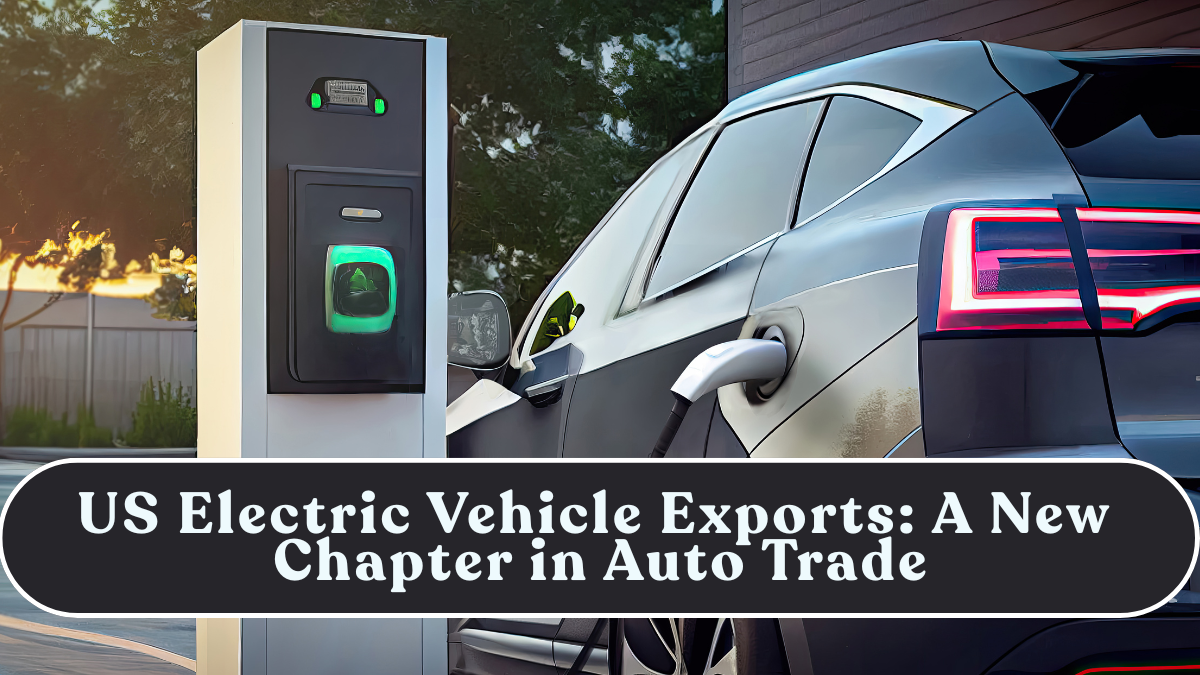For decades, the United States has been known as a massive automotive importer, particularly for small and efficient cars. But in 2025, the landscape is shifting — American-built electric vehicles (EVs) are becoming a major export commodity. As global demand for EVs surges, U.S. automakers are capitalizing on innovation, production scale, and trade policy to become significant exporters of clean mobility.

How the US Became an EV Exporter
The turning point came with a combination of federal incentives, green manufacturing investments, and global demand for premium EVs. Major automakers like Tesla, Ford, Rivian, and General Motors are leading the charge.
Several factors contributed to this export boom:
-
Made-in-USA incentives under the Inflation Reduction Act (IRA) encouraging domestic production.
-
Expanding EV plants in states like Texas, Michigan, and Tennessee.
-
Free trade agreements with Europe and Canada facilitating EV exports.
-
Rising demand for American EV technology and performance globally.
Tesla alone accounted for over 60% of all U.S. EV exports in 2024, shipping thousands of Model Y and Model 3 units to Europe, Australia, and Asia.
Top Destinations for US EV Exports
| Region | Top Imported Models | Key Drivers |
|---|---|---|
| Europe | Tesla Model Y, Ford Mustang Mach-E | High emissions standards and EV subsidies |
| Canada | Chevrolet Blazer EV, Rivian R1S | Cross-border trade under USMCA |
| Asia | Tesla Model 3, Jeep Avenger EV | Demand for performance EVs |
| Middle East | Cadillac Lyriq, GMC Hummer EV | Luxury and off-road performance interest |
European countries remain the largest market, thanks to carbon neutrality targets and limited domestic EV supply.
The Role of Policy and Trade Agreements
The Inflation Reduction Act (IRA) and USMCA (United States–Mexico–Canada Agreement) have been crucial in promoting EV exports.
-
The IRA provides tax incentives for manufacturers that produce EVs domestically.
-
USMCA allows tariff-free trade for North American-assembled EVs.
-
U.S. trade missions in Asia and Europe are opening new markets for EV batteries and charging infrastructure.
In addition, the U.S. government is negotiating bilateral trade deals with nations focusing on EV adoption to secure long-term export markets for both vehicles and battery components.
Automakers Leading the Export Charge
-
Tesla: The largest U.S. EV exporter, with plants in Texas, Nevada, and California producing for international markets.
-
Ford: Exporting its Mustang Mach-E and F-150 Lightning to Europe and South America.
-
General Motors: Shipping Cadillac Lyriq and Chevrolet Blazer EV globally.
-
Rivian: Gaining traction with R1T and R1S models for global adventure markets.
-
Lucid Motors: Exporting Air and Gravity models to the Middle East as luxury EV options.
Together, these automakers represent the next wave of American industrial export strength — high-tech, sustainable, and competitive.
EV Battery Exports: The Next Frontier
Beyond vehicles, the U.S. is rapidly becoming a key exporter of EV batteries and battery components. With companies like Panasonic, LG Energy Solution, and CATL building factories in partnership with U.S. automakers, battery exports are expected to grow 35% annually through 2030.
-
Lithium-ion battery production in the U.S. will exceed 800 GWh by 2030.
-
Energy storage systems (ESS) are also finding export markets in Europe and the Asia-Pacific.
This shift means the U.S. is not only exporting cars — it’s exporting an entire EV ecosystem.
Challenges Facing US EV Exports
While momentum is strong, several hurdles remain:
-
High production costs due to labor and material expenses.
-
Tariff barriers in certain Asian markets.
-
Logistics limitations, including port delays and battery shipment regulations.
-
Currency fluctuations affecting export competitiveness.
However, automakers are mitigating these through regional assembly plants, global partnerships, and improved supply chain resilience.
The Economic Impact
EV exports are fueling the next manufacturing wave in America:
-
Over 75,000 new jobs created in the EV supply chain in 2024–25.
-
$23 billion worth of EVs and components exported in 2025.
-
Boost to GDP and trade balance, especially from luxury and premium segments.
This growth also strengthens America’s soft power, positioning the U.S. as a leader in sustainable automotive technology rather than a follower.
Future Outlook: 2025–2030
By 2030, the U.S. aims to become one of the top three EV exporters globally, competing with China and Germany. The key to success will lie in:
-
Battery independence and mineral sourcing through friendly nations.
-
Continued innovation in charging and autonomous systems.
-
Expansion of EV-specific trade deals.
If current trends continue, American EVs will dominate luxury, performance, and commercial markets worldwide.
Conclusion
The U.S. electric vehicle industry has entered a new era — from being an importer of efficient cars to becoming a net exporter of clean, intelligent vehicles. With strong policy backing, technology leadership, and global demand, American automakers are not just redefining trade but reshaping the global mobility landscape.
FAQs
Which country imports the most U.S.-made EVs?
Europe leads U.S. EV imports, particularly Germany, France, and Norway.
Which U.S. automaker exports the most EVs?
Tesla is the dominant EV exporter, followed by Ford and General Motors.
Are U.S.-made EVs eligible for foreign subsidies?
Yes, in some markets like the EU, they qualify if they meet emission and component rules.
What is the main challenge for U.S. EV exports?
High costs and limited port capacity remain key barriers for scaling exports.
Will U.S. EV exports grow further?
Absolutely. As global EV demand rises, U.S. exports are projected to double by 2030.
